-
Posts
12430 -
Joined
-
Last visited
-
Days Won
554
Content Type
Profiles
Forums
Events
Everything posted by Fiery
-
We've dropped the idea since then, on the basis that there was not a considerable demand from users, while in the same time the multiple SensorPanel feature would have been quite complicated to implement as well.
-
SMART attribute labels are not supposed to be localized, on the basis that they are highly technical terms that may suffer from translation. Also, there are a lot of those attribute names, not just the ones you can see on your particular HDD or SSD right now
-

iPad Pro / Aida64 / Logitech Arx Control setup questions
Fiery replied to reklaw's topic in Hardware monitoring
It depends on the browser you use. You need to use the splash screen I've mentioned above to find out the proper resolution to use. -
The LCD Profiling Dump automatically enables all LCD modules to measure the rendering time for every one of them in a single round. Normally those modules are only enabled if you enable them in AIDA64 / main menu / File / Preferences / Hardware Monitoring / LCD.
-

fixed: CPU wattage meter (Core i7-5930K + Asus X99-Deluxe)
Fiery replied to sblantipodi's topic in General Discussion
Thank you for your feedback! We're planning to roll out a new stable update sometime next month.- 17 replies
-
- x99-deluxe
- asus
-
(and 1 more)
Tagged with:
-

Fan Speeds, Voltage Values Missing (Asus TUF X299 Mark 1)
Fiery replied to korhanby's topic in Bug reports
Thank you for your feedback! AI Suite can indeed collide with other software that also polls the EC (Embedded Controller) chip for sensor registers. Sadly, Asus still haven't made any steps to synchronize AI Suite or other software of theirs with 3rd party monitoring applications. Other than uninstalling AI Suite and all its background services there's no solution to this issue I'm afraid. As for CPU Package, there's no offset to use on any processors, as far as we know. So AIDA64 should report the accurate readout as it is provided by the CPU. If you however are adamant that there's an offset to be applied, then you can configure it in AIDA64 / main menu / File / Preferences / Hardware Monitoring / Correction. -

Supported Hardware Model List (External LCD Displays)
Fiery replied to Fahrenheit's topic in Hardware monitoring
The following document should help you: http://download.aida64.com/resources/lcd/aida64_lcd_guide.pdf As for the mentioned device, that is not supported by AIDA64 currently. To me it looks like a SPI connected device, in which case you need to find a way to connect it to your computer at first. Most likely you would want to connect the device to a USB port, using e.g. a FTDI FT232H bridge chip. -
It says:
-
Such things could happen when the text simply doesn't fit on the screen of the mobile device, and so the browser will wrap the text into multiple lines. Did you configure the right resolution for your browser? Also, I think the font is also incorrect. It could happen when the browser running on the mobile device doesn't support the selected font. In which case you should simply use a different font, like Arial.
-

fixed: CPU wattage meter (Core i7-5930K + Asus X99-Deluxe)
Fiery replied to sblantipodi's topic in General Discussion
Please try the following new AIDA64 beta build, where we've tweaked on the CPU power reading for Asus X99 Series motherboards: https://www.aida64.com/downloads/latesta64xebeta Let me know how it works.- 17 replies
-
- x99-deluxe
- asus
-
(and 1 more)
Tagged with:
-

Fan Speeds, Voltage Values Missing (Asus TUF X299 Mark 1)
Fiery replied to korhanby's topic in Bug reports
The above mentioned new AIDA64 beta build is now available for download: https://www.aida64.com/downloads/latesta64xebeta -
The above mentioned new AIDA64 beta build is now available for download: https://www.aida64.com/downloads/latesta64xebeta
-
All I know is that VIN0 is Vcore But at idle its value shouldn't be used.
- 24 replies
-
- rampage vi apex
- rampage vi
-
(and 3 more)
Tagged with:
-
VIN0 line holds VCore, not VCCIN.
- 24 replies
-
- rampage vi apex
- rampage vi
-
(and 3 more)
Tagged with:
-

fixed: Asus Maximus X Hero not all sensors detected
Fiery replied to facboy's topic in Hardware monitoring
We may enable that in the near future, but only via a Stability option as you've suggested. -

fixed: Asus Maximus X Hero not all sensors detected
Fiery replied to facboy's topic in Hardware monitoring
Thank you for your feedback. Measuring W_IN and W_OUT would require EC (Embedded Controller) bank switching, which is a dangerous procedure to perform on Asus motherboards. EC bank switching may collide with Asus' own AI Suite software package or its underlying service components, or the BIOS itself, and could cause system lockup or other stability issues. T_Sensor is a generic label, meaning Temperature Sensor, that's why AIDA64 also uses a generic label for it. It's correct that way. On your motherboard Fan #4 will be renamed to "Water Pump" fan in the next AIDA64 beta update due in a few days from now. -
AIDA64 CPUID Panel shows Vcore, matching the "CPU Core" voltage reading on the Computer / Sensor page. There's no separate CPU VRM voltage rail that one could measure on your motherboard AFAIK. We'll add +3.3V readout in the next AIDA64 beta update due in a few days from now
- 24 replies
-
- rampage vi apex
- rampage vi
-
(and 3 more)
Tagged with:
-
As long as your CPU works stable at those high temperature levels, and your CPU isn't throttling, you have nothing to worry about. AIDA64 System Stability Test -- especially its FPU subtest -- puts the worst case scenario on your system, so it's normal that it heats up immensely during the test.
-
Thank you. We'll implement advanced support for your motherboard in the next AIDA64 beta update due in a few days from now. I'll post a message into this topic once the new AIDA64 beta build is available for download.
-

Fan Speeds, Voltage Values Missing (Asus TUF X299 Mark 1)
Fiery replied to korhanby's topic in Bug reports
Thank you. We'll implement advanced support for your motherboard in the next AIDA64 beta update due in a few days from now. I'll post a message into this topic once the new AIDA64 beta build is available for download. -

AIDA64 dont recognize processor and memory benchmark error (Core i9-7920X)
Fiery replied to zilin's topic in Bug reports
There's nothing wrong with the actual benchmark results on your system. The warning message pops up simply to remind you that it doesn't use the full potential of your CPU, since it doesn't utilize AVX-512 yet, but only AVX2+FMA. We're still working on AVX-512 optimizations, and hope to be able to roll it out in mid-January. -
It's best to try to run the FPU subtest alone first, for a few hours. If your system can stand that, then without stopping the test just enable all the others, and let it run for a few more hours. If no error message, no sudden system restart, power-off or lockup occurs, then your system is considered pretty stable
- 1 reply
-
- 1
-

-

fixed: CPU wattage meter (Core i7-5930K + Asus X99-Deluxe)
Fiery replied to sblantipodi's topic in General Discussion
The "CPU" power reading should match the one measured by Asus' own software. The "CPU Package" power doesn't work because of the mentioned SVID configuration issue.- 17 replies
-
- x99-deluxe
- asus
-
(and 1 more)
Tagged with:
-
All I can tell you about the Vcore issue is that AIDA64 does what the BIOS does on your motherboard. If the logic behind it seems odd, well, then the BIOS works odd too We've added the requested CPU Cache voltage reading in the latest beta version of AIDA64 Extreme available at: https://www.aida64.com/downloads/latesta64xebeta After upgrading to this new version, make sure to restart Windows to finalize the upgrade. Let me know how it works
- 24 replies
-
- rampage vi apex
- rampage vi
-
(and 3 more)
Tagged with:


